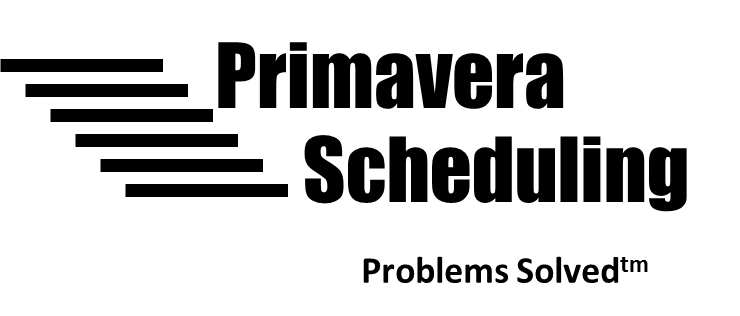There are several settings in Primavera P6 that can have unintended consequences, but perhaps none is worse than what I am about to describe. Primavera P6 users know that negative float can be induced by putting a constraint into a schedule. A Finish On or Before constraint, for example, will generate negative float if the activity is now scheduled to finish beyond the chosen constraint date.
But can a schedule with no constraints generate negative float? A reasonable person would say “no”. After all, if there are no constraints in the schedule the project can extend to any date. So negative float is simply not possible. Who could possibly argue otherwise?
Well, I can! Because I have seen it in action. Let me set the scene. I was at the Kennedy Space Center teaching a Primavera P6 class to a NASA contractor last year when one of the class participants presented an unusual problem. His schedule had negative float but no constraints.
I was quite sure he had forgotten about the Must Finish By constraint. It does not show up in the Schedule Log and no asterisk will appear in the date columns. Nope. My client truly had no constraints in his schedule. Yet some activities had negative Total Float.
The contractor commented that all of the negative Total Float seemed to be on Level of Effort activities and nowhere else. Yet the predecessors and successors to the Level of Efforts had positive float. Huh?
This is one of those situations when I wish I still had some hair to pull. I use Level of Efforts in pretty much every schedule and have never had any problems – regardless of whether any constraints were being used. Some setting or calculation in Primavera P6 was clearly off. After some research in the Oracle Knowledge Base (Document ID 988077.1) the culprit was located.
In Primavera P6, Total Float can be calculated by one of three methods:
- Start Float = Late Start – Early Start
- Finish Float = Late Finish – Early Finish
- Smallest of Start Float and Finish Float
These options are found under the Schedule Options, as seen below:
Right out of the box, Primavera P6 always calculates float using the middle option, Finish Float = Late Finish – Early Finish. And most users would probably not consider changing the calculation method if for no other reason than not understanding why it would make a difference. The NASA contractor had likewise always used this method of calculating float until someone decided to play with the settings. By shear luck, this happened between our training sessions at Cape Kennedy.
There are of course a lot of settings in Primavera P6 that could change the way a schedule behaves. In this situation, no one remembered changing the Schedule Options. The schedule had just been updated, but not for the first time and previously there was never a problem with the float. Seemingly overnight, the float had just gotten weird.
The NASA contractor had switched the calculation to float = Late Start – Early Start. Primavera P6 calculates float values for both the beginning and end of each activity because the values can be different whenever the relationship type is not Finish-to-Start. You probably did not know this (or even care!) but it can make a difference. But any float calculation method other than the one using late dates results in erroneous float being displayed on Level of Efforts.
In the next screenshot I am displaying a Level of Effort activity with negative float.
As you can see in the Activity Details, the predecessor and successor tasks do not have negative float. But why negative float? I have an answer but not an explanation. The negative float is being calculated as the difference between the actual start date of the Level of Effort and the Data Date.
Think about it. Primavera P6 considers the Level of Effort as being behind schedule because it has an actual start date that is before the Data Date. Where else should the actual start be?
In the schedule above the Level of Effort started the day before the Data Date so it is theoretically a day behind schedule. Ridiculous, but that is how Primavera P6 is calculating the float for Level of Effort activities.
Choosing the third method of calculation, Smallest of Start Float and Finish Float is still a bad idea because a negative number would still appear on the Level of Effort. According to Oracle, Start Float and Finish Float is usually the same, but can be different on both Level of Effort and WBS Summary activities.
Why? Who knows, but it keeps me on my toes!

















